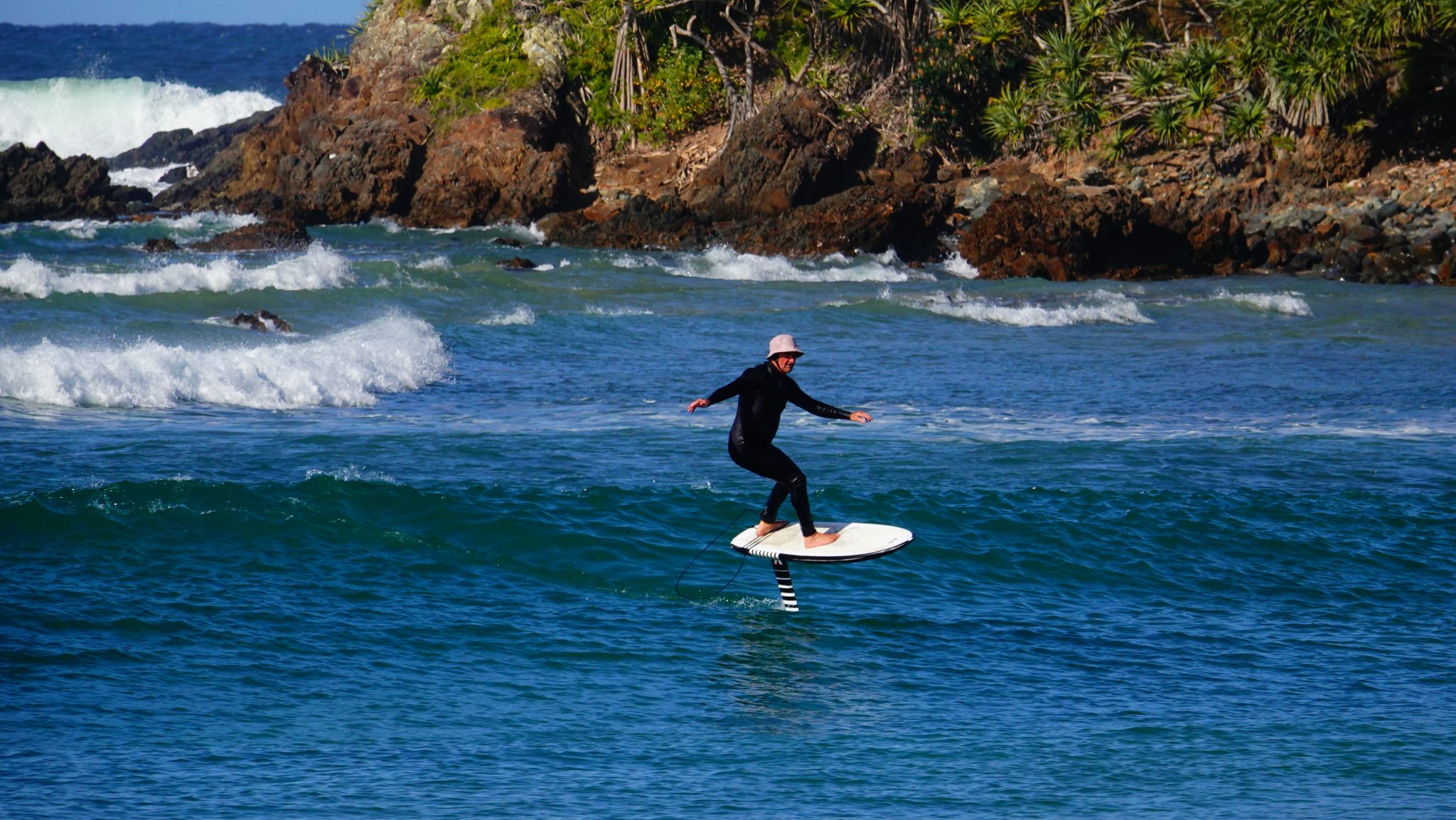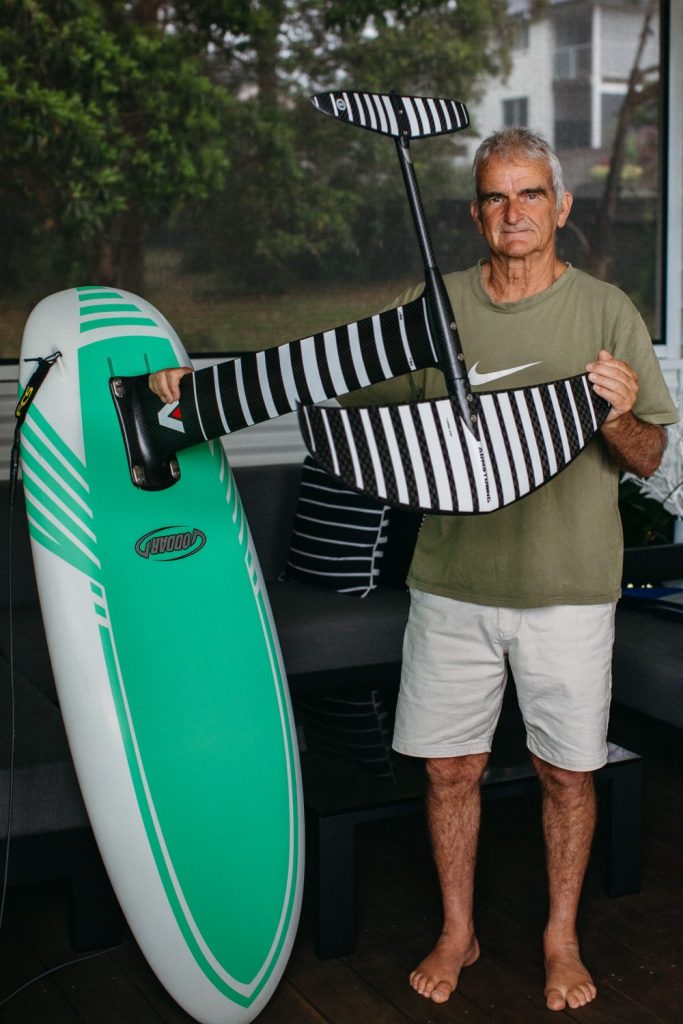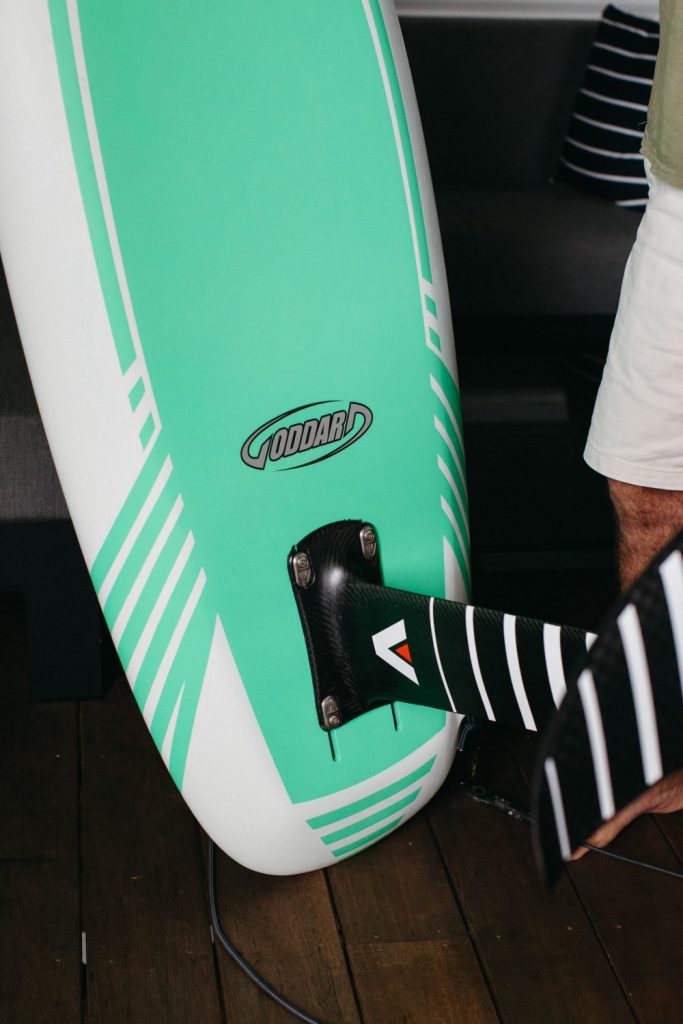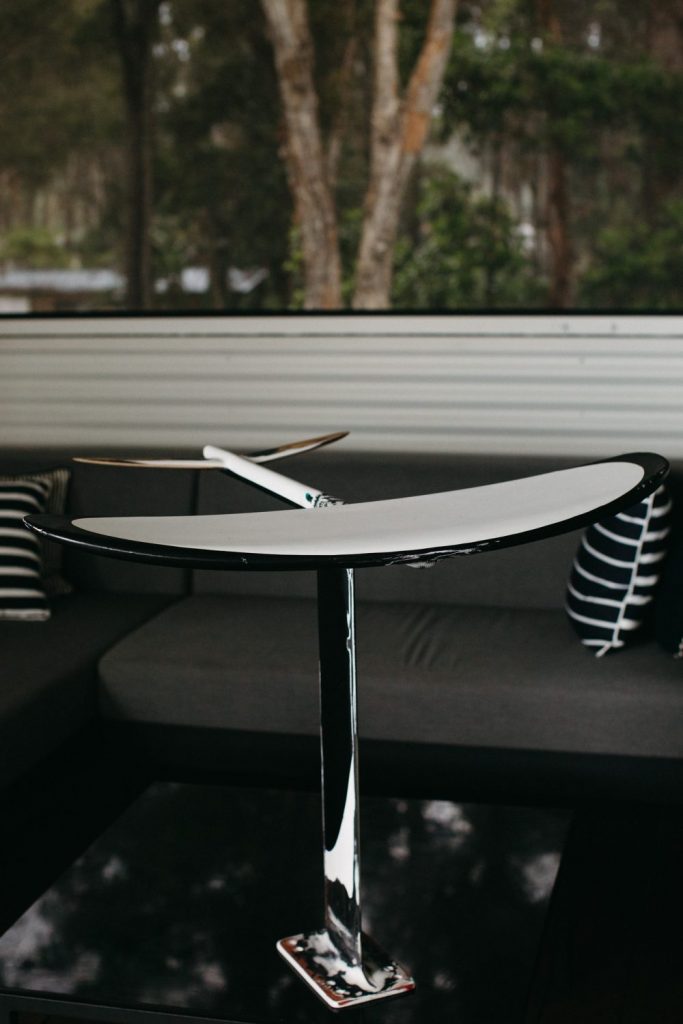Surf Craft Evolution: Hydrofoil Boards
Retired surfboard designer Ronnie Goddard is mad about hydrofoil surfing. The Coffs Coast local has been shaping for more than 50 years. He’s watched the evolution of all manner of surf craft with fascination. As each new development emerged, Ronnie wanted to get involved. He attempted his own hydrofoil but now prefers to focus on designing the boards on top…and testing them out, of course! Coastbeat caught up with Ronnie at home to learn all about his latest craze.
Cb: What is a hydrofoil?
Ronnie Goddard: Hydrofoils have been around for a long time. It’s an underwater fin with a flat or curved winglike surface that’s designed to lift a moving boat or ship. Prone hydrofoil surfing was born in Hawaii like a lot of water sports are. It was the Maui guys like Laird Hamilton and his mates who thought Why can’t we strap ourselves onto boards and ride waves with them? Basically, it’s a little aeroplane under the water. It works exactly the same way as an aeroplane wing does, where the water travels over both surfaces, it travels over one surface quicker than the other which creates lift and pulls you out of the water. When you’re on a hydrofoil board, it’s virtually riding a wave like a dolphin, while you’re standing on its back. You’re using the slope of the wave to generate the speed. They’re fast and scary.
Cb: Sounds wild! Is it hard to do?
RG: I tend to say to people, If you want to learn how to hydrofoil, it’s a bit like taking a judo lesson and realising your instructor doesn’t like you and you’re going to get smashed. Or it’s like having a schizophrenic dog that bites you for no reason. It’s a giant slice of humble pie. Because of my age I get smashed more than others. It’s a young person’s sport. The easiest way to start is behind a boat or jet ski. It’s pretty easy to get up and ride behind a boat but the hard part comes in when you have to paddle into a wave. It’s like flying anything – the take-off and landing are the hardest!
Cb: Any hairy moments or bad spills?
RG: Yep, lots. It’s hit me quite a few times – nothing serious, touch wood. But the reward far outweighs the risks. I can’t compare it to surfing because there’s no rail to turn off like on a surfboard. You’re actually flying. So rather than turning you’re banking it. A lot of young guys are doing phenomenal things on them. Things no one thought possible. It’s unbelievable where it’s going.

Cb: What got you interested in hydrofoil boards?
RG: I’ve been building surfboards for more than 50 years now, I started 1969. I still love it, but I’ve retired now. I sailed before I surfed and when I first came to Coffs around 1972, I got into sailing Hobie Cats. After that it was pretty much the birth or sail boarding and I wanted to build them. That kind of morphed into kite surfing. Eventually I was designing all three. I was lucky enough to be at the forefront of all of them. You couldn’t really copy anyone – there was no Instagram – you got the basic concept of it all and then it was up to your design know how as to how good your boards were. That’s how I approached the foils, too. I’ve seen a lot of change. Sometimes being at the beginning is not always good as designs are often crude. But it’s good to be able to look back over it and know you were there from the start. But who knows what the next thing will be. If you had have told me I would put a tiny mast on a big surfboard and flown around the ocean with the wind I would have thought you were crazy. And while we were doing that if someone had said Soon you’ll put a kite up and be pulled around on your board I would have said You’re on drugs! And when you finish that you’ll be up on top of this hydrofoil, out of the water scooping along wave faces…what’s next?
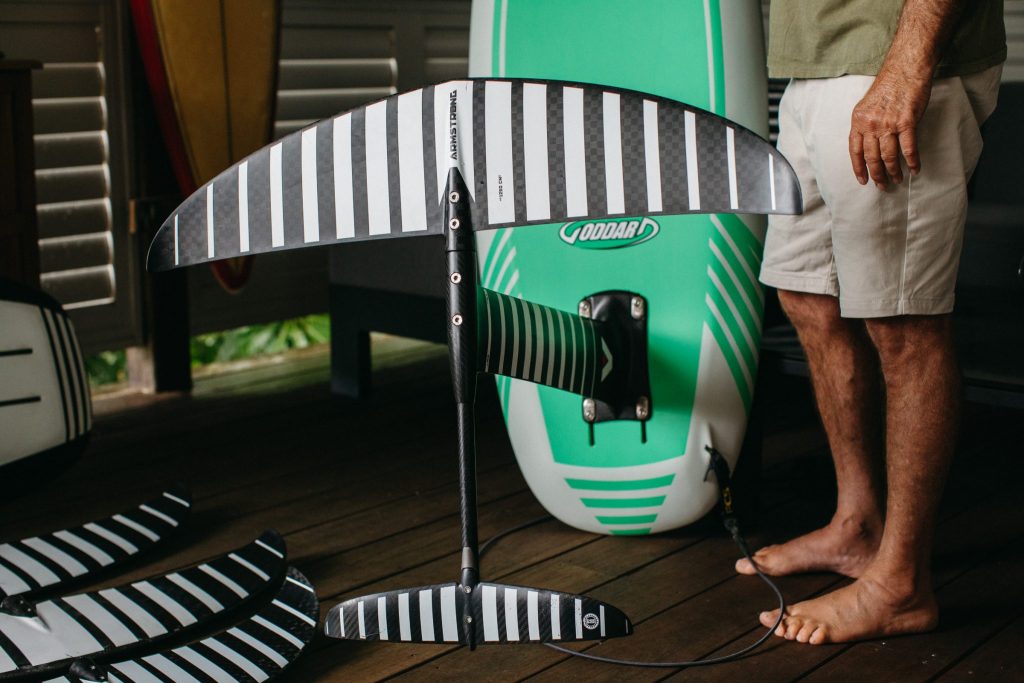
Cb: People have argued hydrofoil boards are dangerous and have no place in the surf line-up. Have you experienced hostility?
RG: It’s a matter of conjecture. Surfers are the biggest haters in the world. They pigeon-hole themselves all the time. I can see their beef, but it’s like trying to take chocolate off an addict! I’ll put up with the flack just for the buzz. You need a specialised wave and that happens to be a soft, rolling point break or something similar. Nowadays points are pretty well packed with long boarders so you get a few people who don’t like the fact you’re there. You wouldn’t want to learn in those conditions but even when you can do it, you’re capable of doing causing damage if you let the thing go. I think they’re here to stay. If anyone doesn’t like them, they’re just going to have to suck it up.
Cb: You attempted your own foil. How did that go?
When I made mine I was totally winging it. I did what I felt the thing should be like. It roughly looks the same but the leading and trailing edges are much finer on my commercial one. I quickly realised I didn’t have enough of an idea about how it works to make a really good one. It works but nowhere near as well as my state of the art one. All of the research and development has already gone into them. The amount of work in them is phenomenal and I couldn’t get mine strong enough. The professional ones have carbon fibre, titanium and tricky yacht building stuff! Mines is all in patches where it has broken.
Cb: What advice would you give people keen to give hydrofoil boards a go?
With this sport you have to go back lower than square one. Square one people are doing much better than you! That’s a hard pill to swallow for someone who has been doing something for 50 years. I always say if you’re going to learn to hydrofoil, be prepared to eat the whole humble pie – not just a slice. There are true water people out there and that’s why these sports go ahead. They’ll give everything a go. They’re the people we should look up to, they’re the real innovators and they’ve gone back to square one to try to master these things. The rest of us experience better things because of them. That’s the beauty of it all. That and the pull of the ocean. Once it gets ya, you’re gone!
Cb: Thanks Ronnie, happy foiling!
Follow Ronnie on Instagram and check out Gary McEvoy Surf Videos


